Halifax NA612 near Brafferton.
On the night of 3rd / 4th March 1945 Bomber Command attacked various targets in mainland Europe including Kamen and Ladbergen. In the main, Lancasters crews of No.5 Group supplied 222 aircraft and were tasked with attacking the Dortmund-Ems Canal near Ladbergen while some 234 aircraft were supplied by various Groups, mainly Halifaxes and they attacked a synthetic oil production plant at Kamen. A diversionary force of some ninety five bomber aircraft made up from 100 Group aircraft and the training establishments were supplied to act as a diversionary for the main bomber forces. These tactics were employed on a number of nights in 1945 and became known as "Operation Sweepstake". They appear to have been used to drop parcels of window to confuse German early warning or what we now call "radar" systems. The training aircraft and crews were pulled mainly from crews serving with the Heavy Conversion Units.
No.6 Group's training establishment at 76 Base was asked to supply fourteen aircraft; two from 1659 H.C.U., six from 1666 H.C.U. and six from 1664 H.C.U. were to have flown. The crews were probably nearing the end of their Heavy Conversion Unit training. Of the 1666 H.C.U. aircraft two did not get into the air because of technical trouble. Both 1659 H.C.U. appear to have flown the task without incident. The 1664 H.C.U. had the most problems; one "-U" was a non-starter, one returned early, two were damaged on their return by enemy action and either crashed or crash landed, as will be detailed below, so in the end only two completed the task and landed safely. 581 bndles of window were dropped by No.6 Group H.C.U. aircraft on this night.
On the same night the Luftwaffe undertook "Operation Gisela", this involved over one hundred Junkers Ju88 aircraft following the returning operational bombers back to their bases in England and in near perfect skies the night-fighters picked off a number of bombers as they approached landings with their navigation lights switched on. One such pilot, who may have actually been the only one over the general Ripon / Thirsk area, was Lt Arnold Doring, of 10/NJG3. There is slight confusion surrounding the events that Döring later claimed as the locations do not fit. He gave an account of this night in 1945 which is printed in William Chorley's Bomber Command Losses Book 1945. Döring stated that he flew in low from the North Sea over Scarborough and then headed inland until he located the morse lights at Dishforth airfield to direct their aircraft home. In his account he only claimed to have shot down a "B17" and a "Lancaster" and possibly damaging another bomber before heading back out over Scarborough. The confusion exists because in modern-day accounts there are too many aircraft where he is credited with involvement in their destruction on this night. The first aircraft he is credited with in modern day research was Fortress HB815 which crashed near Oulton airfield, Norfolk with the loss of eight airmen, Döring's account and the known orders of his unit state that he only operated over Yorkshire on this night and therefore very unlikely he would come in over Scarborough and end up so far south over Norfolk. Given Döring claimed his first aircraft to have been a B17 (Fortress) the assumption seems to have been made that it was Fortress HB815 near Oulton, this was the only Fortress to be shot down in the wider Eastern / Northern England area on this night and it probably explains the claim. Oulton is many miles south of where he made landfall and it does seem unlikely that this was the actual victim to his guns. He stated that he saw this "B17" catch fire and he watched it crash but did not catch fire on the ground. I would suggest that his first victim was actually a 10 Squadron Halifax HX332 which was attacked by a night-fighter and crashed at Spellow Hill, near Boroughbridge with the loss of most of the crew but with the pilot being able to keep control long enough to allow some of his crew to bale out. Döring's account fits for what is believed to have happened to Halifax HX332. Doring's account then states he attacked a "Lancaster" and watched this catch fire in the air before crashing "in a big fire", this aircraft is almost certainly Halifax NA612. Halifax NA612 was one of the 1664 H.C.U. aircraft that were returning to Dishforth following the diversionary raid. NA612 was badly damaged in Doring's attack, it was seen to turn on it's back and dive into the ground at 01.44hrs near Brafferton. This webpage relates to that incident.
Doring stated that he then attacked another bomber at low level and head-on and had to pull his aircraft up to avoid hitting it, he did not see this aircraft crash. This third aircraft was probably 1664 H.C.U. Halifax MZ654 which was coming into land at Dishforth, three of the crew managed to bale out while the aircraft was still flying at 3,000 feet and the pilot of this aircraft was able to keep control and make an emergency landing at Dishforth. Halifax MZ654 was badly damaged, the damage was later assessed and it was not repaired. If there was just one pilot over the general Ripon / Thirsk area then Doring's route after this final attack of 1664 H.C.U. aircraft can be plotted, a diverted 77 Squadron Halifax MZ769 was making a landing at Skipton on Swale and he straffed that as well as a hanger which damaged two parked 433 Squadron Halifaxes. He then headed east and was probably the pilot who over-flew Topcliffe airfield and fired shots across the airfield slightly damaging various buildings. Unfortunately a WAAF driver was sleeping in the M.T. office at the time and was struck in the neck by a cannon shell, LACW Frances Elsie Clinker WAAF (2065275) died a few minutes after being injured. She was 22 years old and is buried in Bristol (Shirehampton) Cemetery. Doring then kept flying east, he fired on a car and an empty-stock passenger train between Husthwaite Gate and Sunbeck, the train had left Helmsley station and was heading back to York empty, except for the guard who was in the rear of the train. The body of Mr Thomas Inman was found when the train stopped, he was thirty four years old and he had lived next to Gilling East railway station at No.3 Railway Cottages. Lt Döring then headed towards the coast and overflew Wombleton airfield, firing across the airfield but scored very little damage and no injuries. He then headed back to the coast and used his ammunition up on the streets of Scarborough before flying across to land in Denmark. On 17th April 1945 he was awarded the Knight's Cross of the Iron Cross for his actions throughout the War as a pilot.
Exactly how many other enemy aircraft were in this area of Yorkshire on this night but the timings fit for him being the only one. My only issue would be the capacity of one aircraft to hold all the amumition required for this such list.
Halifax NA612 was built by Fairey Aviation, it was delivered to the RAF on 2nd August 1944 and was first used by 415 Squadron. It was damaged by flak on 14th October 1944 on an operational flight over Duisburg, the then pilot was able to make a safe return and land at East Moor airfield with damage to the port wing, aileron and flaps. The flak damage was quickly repaired and it continued to serve with 415 Squadron before being tranferred to Dishforth on 30th November to join 1664 Heavy Conversion Unit.
Pilot - P/O Kenneth William Griffey RCAF (J/92644), aged 20, of Hamilton, Ontario, Canada. Buried Harrogate Stonefall Cemetery, Yorkshire (H/G/16).
Flight Engineer - Sgt Sidney Forster RAFVR (1589967), aged 21, of Newcastle upon Tyne. Buried St.Nicholas Cemetery, Newcastle upon Tyne.
Navigator - WO2 John William Buttrey RCAF (R/123964), aged 21, of Medicine Hat, Alberta, Canada. Buried Pulverbatch Churchyard, Shropshire.
Bomb Aimer - F/O George Henry Lloyd RCAF (J/42728), aged 19, of Wingham, Ontario, Canada. Buried Harrogate Stonefall Cemetery, Yorkshire (H/G/15).
Wireless Operator / Air Gunner - WO2 Lawrence Theodore Chevrier RCAF (R/180951), aged 23, of Cornwall, Ontario, Canada. Buried Harrogate Stonefall Cemetery, Yorkshire (H/H/1).
Air Gunner - Sgt Leonard Boardman RCAF (R/89500), aged 27, of St.Catharines, Ontario, Canada. Buried Harrogate Stonefall Cemetery, Yorkshire (H/G/9).
Air Gunner - F/Sgt John Edward Fielder RCAF (R/278513), aged 20, of Calgary, Alberta, Canada. Buried Harrogate Stonefall Cemetery, Yorkshire (H/G/14).
Kenneth Griffey was born on 31st January 1924 and was the son of Montague and Ivy (nee Seeley) Griffey, of 23 Fairview Avenue, Hamilton, Ontario, Canada. His father was born in the Bideford area of Devon, England in 1990 while his mother was also born in 1889 in England but they had emigrated prior to being married in Ontario in May 1923. Prior to enlisting into the RCAF in October 1942 Kenneth Griffey worked for the Otis Fensom Elevator Company having graduated from the Frank E. Close Technical Institute. He qualified as a pilot on 11th February 1944 at 1 SFTS at Camp Borden and was posted to the UK in April 1944. He then trained at 15 (P)AFU and 24 OTU before being posted to 1664 HCU on 12th January 1945 shortly after receiving a commission on 20th November 1944.
Sidney Forster was the son of Thomas Brown Forster and Catherine Forster (nee Wardle), of Newcastle-on-Tyne. Nothing else is known about him. His sister and her family were able to attend the memorial service in May 2013.
John William Buttrey was born on 10th August 1923 at Medicine Hat, Alberta, Canada and was the son of William and Susan Pearl (nee Andrews) Buttrey. His father died as a result if an accident when he was a child. He tried to enlist for RCAF service in November 1940 but was rejected as being too young. After leaving school he did a metalworking course before starting work for the Canadian Car and Foundary Co.Ltd in Fort William, Ontario as a production worker. This company were involved in manufacturing a number of products for the war effort including Hawker Hurricanes. He left this job to enlist for RCAF service on 19th August 1941 in Winnipeg and trained as an air observer, gaining his air observer flying badge on 31st July 1942. His service then continued in the UK, he arrived in the UK in September 1942 and was posted to 10 (O)AFU later that month and was then posted to train at 28 OTU on 29th September 1942 and to 1662 HCU on 20th March 1943. His service file states he was withdrawn from flying duties in May 1943 and left training at 1662 HCU to be repatriated to Canada on 30th July 1943. His air observer / navigation badge was withdrawn later in 1943 but he then re-gained it again in 1944 after a refresher course. He was posted back to the UK in April 1944, trained at 7 (O)AFU in June 1944 and then at 24 OTU in August 1944 before posting to 1664 HCU much later on 12th January 1945. While back in Canada he married Florence Evelyn (surname not known), of Saskatoon, Saskatchewan, Canada. His name is listed on the Medicine Hat cenotaph in Riverside Park, Medicine Hat, Alberta. He was buried under the arrangements of his uncle Robert Bishop at Pulverbatch on 8th March 1945.
George Lloyd was born on 12th June 1925 in Wingham, Ontario, Canada and was the son of Richard Hilton and Minnie (nee Bosman) Lloyd. His father was a graduate of Toronto University in 1915. He enlisted for RCAF service on 29th December 1942 in London, Ontario and trained as an air bomber, receiving his air bomber's badge on 10th March 1944. He also received a commission on the same date. On arrival in the UK in May 1944 he further trained at 10 (O)AFU and 24 OTU before posting to 1664 HCU with this crew on 12th January 1945.
Lawrence Chevrier was born on 14th July 1921 in Lancaster, Ontario, Canada and was the son of Joseph Donat and Elizabeth (nee Decaire) Chevrier. The family later moved to Cornwall, Ontario, and as a young man he worked in a cotton mill. He enlisted for RCAF service on 17th August 1942 in Ottawa and trained as a wireless operator / air gunner. He was awarded his wireless operator badge on 14th June 1943 and then his air gunner's badge on 26th July 1943. He then remained in Canada for almost a year, possibly serving as a staff wireless operator / air gunner with No.1 General Reconnaissance School (1 G.R.S.). On arrival in the UK in June 1944 he further trained at 6 (O)AFU and 24 OTU before posting to 1664 HCU with the rest of this crew. Both his parents were born in 1898, his father Donat died in 1976 and mother Elizabeth the following year.
Leonard Boardman was born on 14th August 1917 and was the son of Leonard Joseph and Hughina (or Ina) (nee Simpson) Boardman, of St.Catharines, Ontario, Canada. He was educated in St.Catharines and began work at Shawinigan Chemicals Ltd in March 1939 as an acetylene gas generator operator. In October 1939 he married Mavis Kay and they had a baby son in 1940. He enlisted into the RCAF for ground duties on 6th March 1941 in Hamilton and served in Canada until remustering as air crew in July 1943, he then trained as an air gunner and was awarded his Air Gunner's badge on 5th May 1944. He was posted to the UK a few weeks later and then further trained at 24 OTU before posting to 1664 HCU. At the time of his death his wife was living in Merritton, Ontario where his name is listed on the war memorial.
John Fielder was born on 1st March 1925 in Edmonton, Alberta, Canada and was the son of William and Laura Mabel (nee Porter) Fielder. He attended school in Edmonton and his father died when he was young. He and his mother later moved to Calgary, Alberta and in 1941 he started work there as a lineman for the Canadian National Telegraph Company. He enlisted for RCAF service in Calgary on 29th September 1943 and trained as an air gunner in Canada. He was awarded his air gunner's badge on 5th May 1944 and was then posted to the UK where he then trained at 24 OTU before posting to 1664 HCU.
On 12th May 2013 a large memorial stone and plaque was dedicated in Brafferton to remember those who lost their lives in this incident, despite poor weather a large crowd of villagers were present to attend a short memorial service which was also graced the BBMF Lancaster in a fly-past. Unfortunately the original plaques, although made of metal, did not withstand the weather and less than five years later they were replaced. A re-dedication service took place on 4th March 2018.
On the day of the memorial dedication a remembrance flag was placed on the site of the crash to mark it from the memorial.
I thank various members of the Helperby and Brafferton War Memorial Committee including Earl Pick, Nigel Denison and Roger Clements for correspondance in 2013 prior to the memorial dedication, an invite to the dedication service and for their input in compiling this webpage.

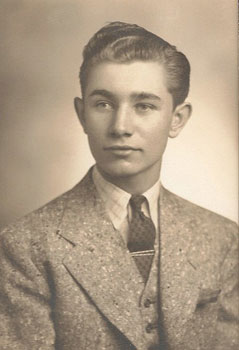
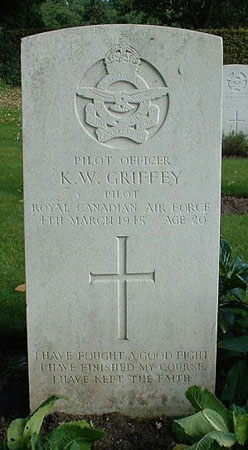
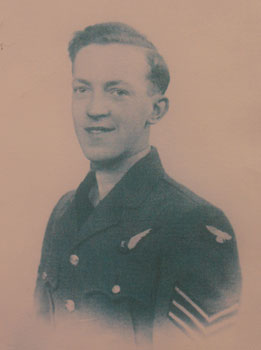
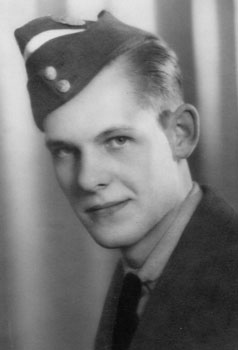
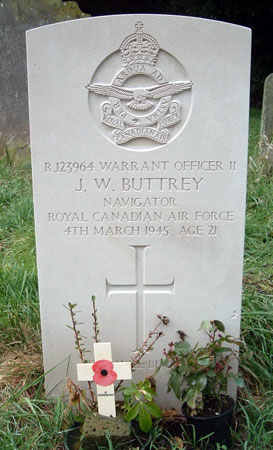
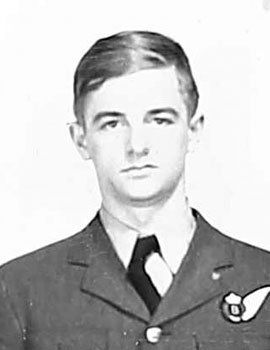

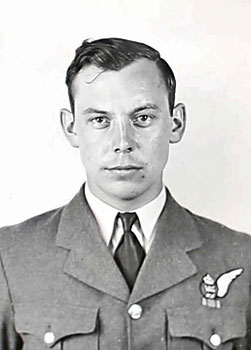
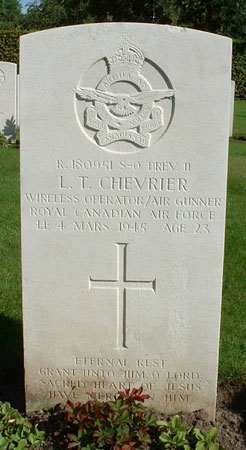
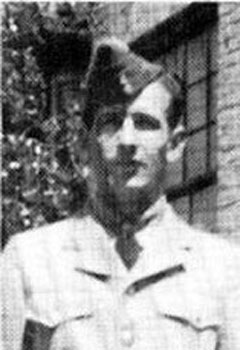
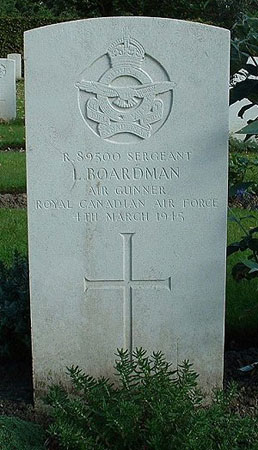
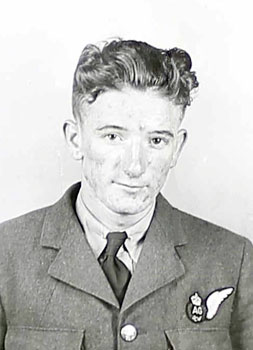

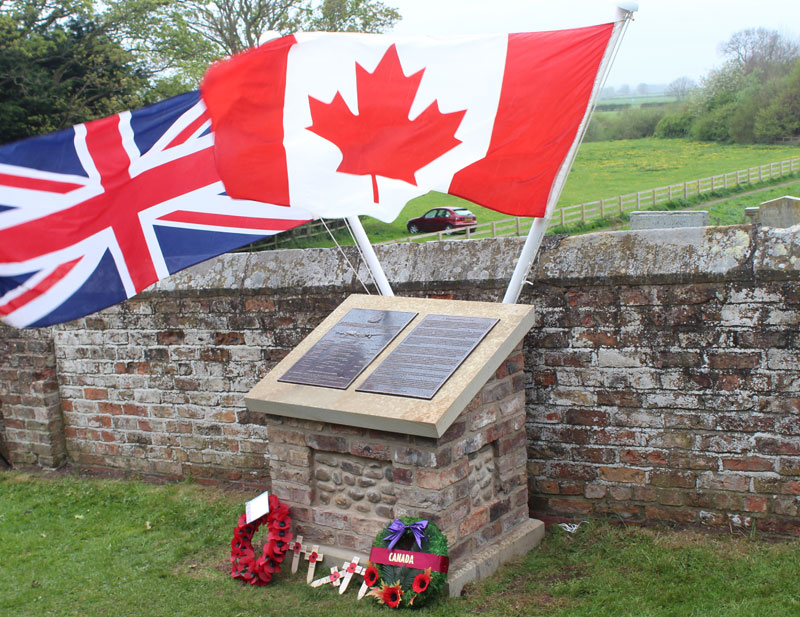

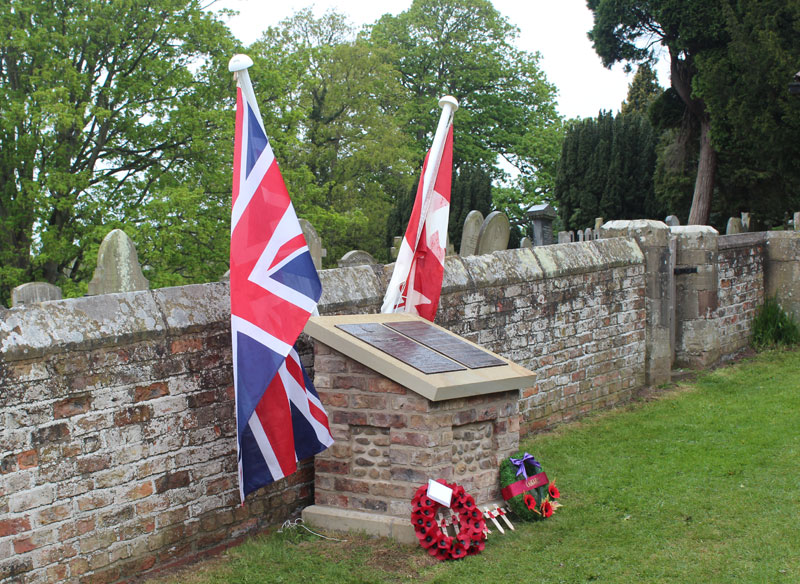

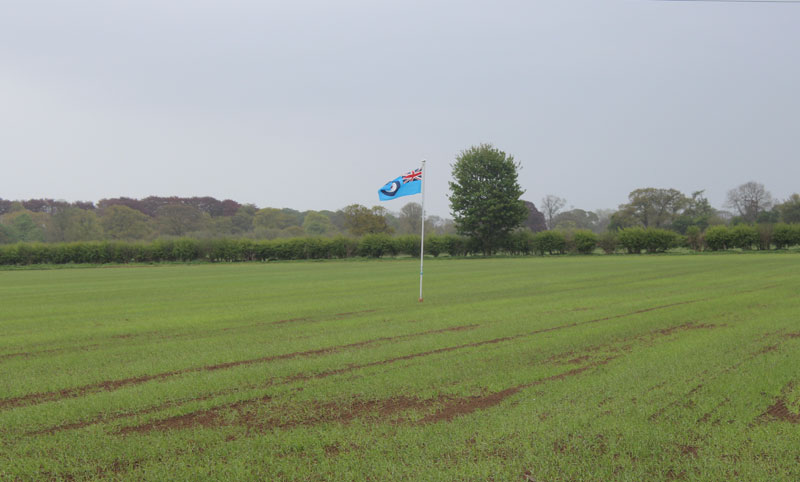
"aviation-safety.net" has blatantly "cut and pasted" a former version of this webpage for their webpage content. All well and good but when you do not research something for yourself you cannot then find any errors or additions and correct them like I have now done. Maybe their chief "cut and paster" will notice the corrections and add them to his text.